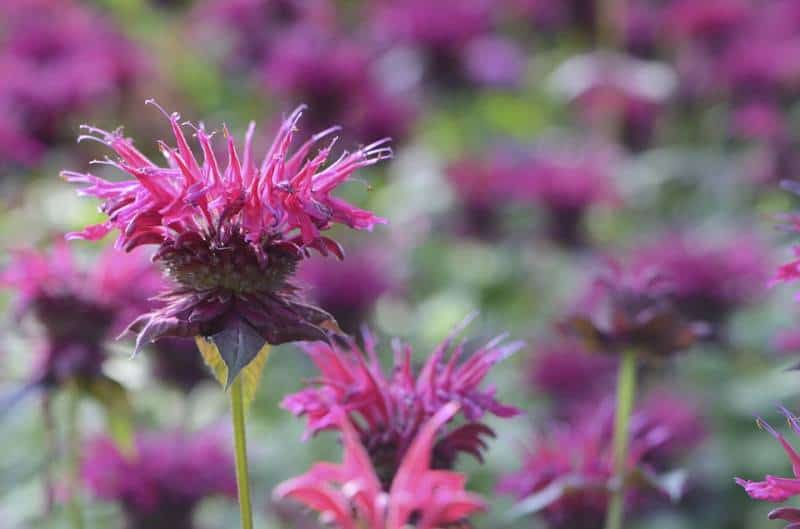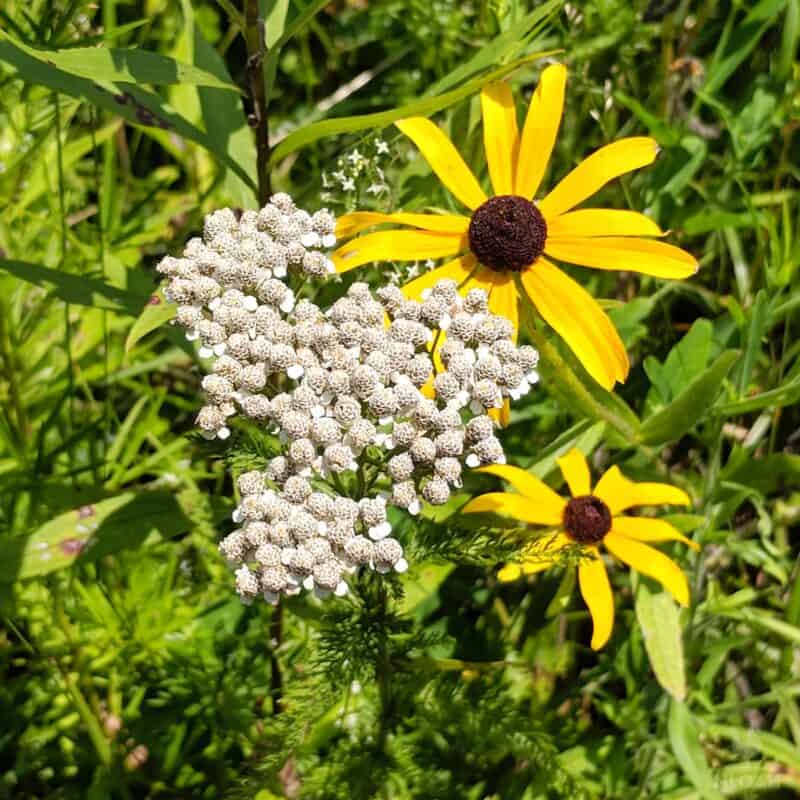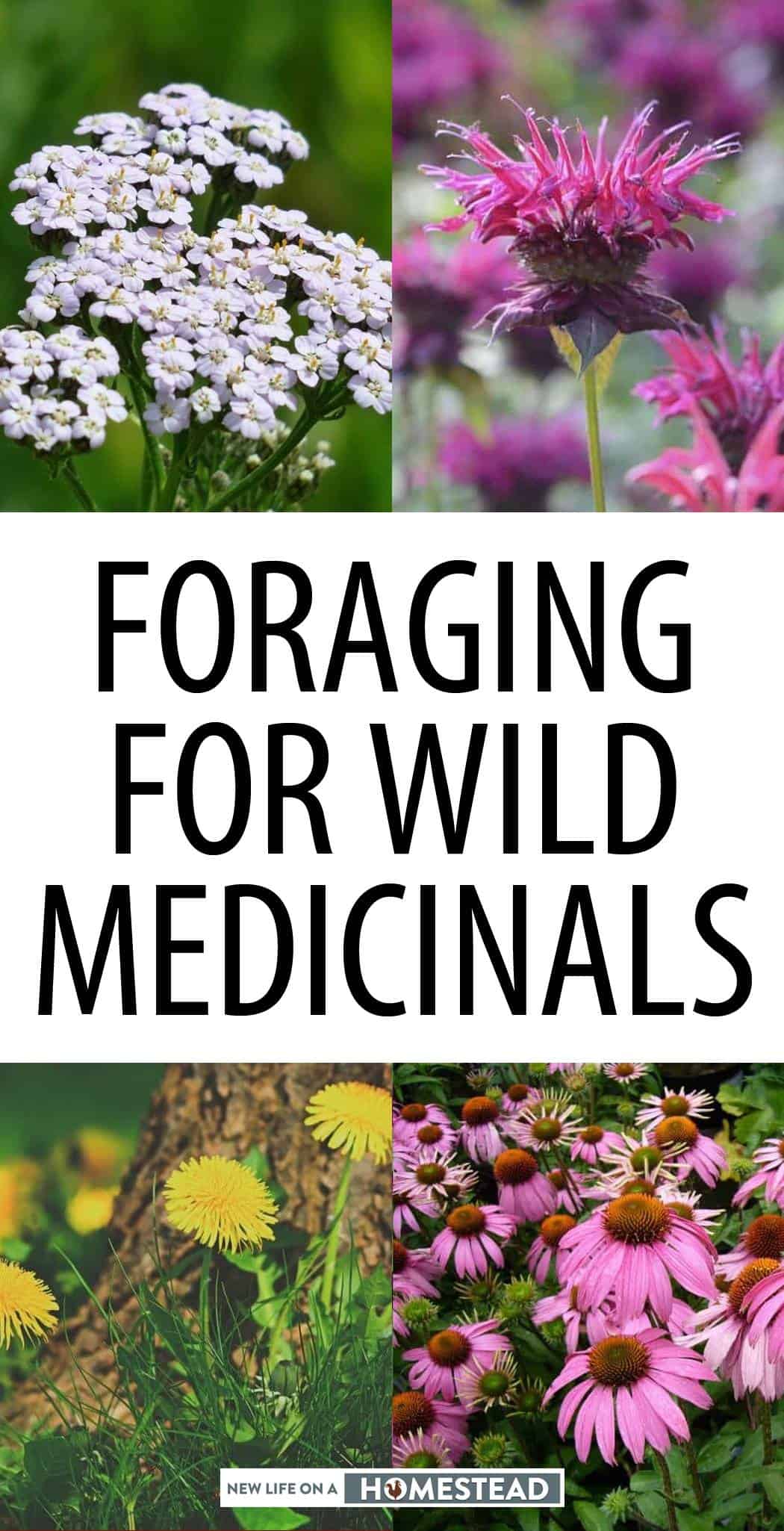Every forager knows that the best plants aren’t just pretty or tasty, but have many practical uses as well. So, it’s no surprise that modern foragers value wildflowers and weeds for the healing properties they have as much as they do for their taste.
Certain plants have numerous health benefits, and can be used in cost-effective home remedies. In fact, the demands for more affordable effective healthcare in the modern world has scientists clinically testing the efficacy of plants in treatments, while encouraging the revitalization of indigenous cultures at the same time.
Things to Bring on Your Medicinal Foraging Trips
If you are planning to go foraging for medicinal plants, there are a few items you’ll definitely want to take with you.
Disclosure: if you visit an external link in this post and make a purchase, I may earn a commission. Read my full earnings disclosure here.
A good field guide is a must-have, since it’ll be invaluable in helping you identify the useful herbs you run across. Peterson’s Field Guide to Medicinal Plants and Herbs is a great reference, and fits easily in a small backpack or coat pocket.
A good pair of kitchen scissors is also useful to bring, along with a small pocketknife; you can use both items to help cut away the stems, leaves, and other pieces of plants you are foraging.
Self-sealing plastic bags are also useful for separating and storing the plants and herbs you run across; plastic containers are great for delicate berries you may be lucky enough to find, too.
You should also pack sunscreen and water for yourself, especially if you plan to be out in the woods for a while as well.
Finally, if you can, try to bring another person with you if you can. There is safety in numbers and having someone with you when you’re in the woods is a good bet you if you are injured or run into some sort of trouble. If you know an experienced forager, an outing may help you increase your knowledge and skills too.
On the other hand, if you’re an experienced forager yourself, bringing a novice out there can help you pass on your enjoyment of a rare skill and past time to another person, and help keep the art of foraging alive.
Below is a list of twelve medicinal plants popular among American foragers. Each plant has multiple benefits and a rich history in folk medicine. These plants can be brewed into a tea, applied externally as a salve, or eaten. However, always practice caution when foraging and ingesting wildflowers.

1. Purple Coneflower
Echinacea purpurea, known commonly as the purple coneflower, is an herbaceous perennial in the aster family. The wildflower gets its name from the lavender ray flowers growing around the brown head.
It grows between 3-4 feet (1 – 1.2 meters) tall, and its height combined with the vibrant petals make it easy to identify. It typically grows in meadows and woodland areas throughout the eastern and central United States.
In colonial America, coneflower was a favorite among both Native Americans and early settlers due to its medicinal properties. It was used to treat scarlet fever, diphtheria, and more. It was applied externally to wounds that were not healing properly.
More recent studies have concluded that coneflower is effective against UTIs, yeast infections, and athlete’s foot. The plant contains active chemicals that relieve pain, reduce inflammation, and even have hormonal and anti-viral properties.
Early lab studies suggest that purple coneflower combined with cichoric acid can inhibit colon tumors. Other studies have shown that purple coneflower tea can reduce the chance of colds, and hasten how quickly a patient gets over one by 1-4 days.
Lab analysis shows that the upper part of the plant is rich in polysaccharides and alkamides. Polysaccharides have proven to boost both the immune and digestive systems in humans. Alkamides stimulate the immune system, allowing humans to heal from illness faster.
The root is rich in essential oils, which can reduce stress and anxiety when inhaled. The combination of chemicals in the roots and upper part of the plant make it so beneficial for human health.
2. Dandelion
Taraxacum officinale, known as the dandelion, is one of America’s most common weeds. This herbaceous perennial is very small, usually only growing between 5-40cm (2-15.7in). However, it’s vibrant yellow flower heads make it easily recognizable.
You’ll find this plant growing along roads, waterways, all over your lawn and homestead if you’re lucky.
The common dandelion contains several bioactive components that are anti-inflammatory, anti-rheumatic, and antioxidative. It also has antibacterial and fungicidal properties. The weed also contains taraxasterol, which may counteract tumor development at multiple stages.
A recent study by the World Health Organization revealed that 70-80% of the global population relies on non-conventional medicine, usually due to economic barriers. As Type 2 Diabetes becomes more common throughout the world, scientists have turned to plant medicine to find affordable treatments.
Common dandelion contains a complex carbohydrate known as fructo-oligosaccharides (FOS). FOS contains inulin which can regulate blood sugar levels.
It also affects insulin production and secretion. As medicine remain inaccessible for the vast majority of the population, traditional treatments are becoming more sought after.
Traditional populations throughout the world used dandelions for a variety of ailments. Chinese healers brewed the entire plant into a tea to treat stomach and liver problems, inflammation, and low lactation in new mothers. Europeans used it to treat fevers and boils.
3. Skunkbush Sumac
Rhus trilobata, known as skunkbush sumac, grows in dry, rocky soils throughout the American southwest and northern Mexico. The leaves contain three leaflets each and have a bitter odor when crushed. The deciduous shrub was used by Native Americans both for food and medicine. Even frontiersmen used to eat the tart berries like popcorn.
The Zuni people, and Mono and Navajo tribes of the American Southwest found many uses for sumac. They chewed the bark or brewed it into a tea to treat cold symptoms.
Additionally, tribespeople ate the tart berries to treat toothaches and upset stomachs. The roots and leaves were brewed into tea as a multi-purpose medicine.
In modern times, sumac is a common ingredient in toothache medicines lining drugstores. The plant is rich in tannic and gallic acids. Gallic acid demonstrates cytotoxicity against cancer cells, without killing healthy cells. Ointments containing Gallic acid are effective against external hemorrhoids.
4. Common Horsetail
Equisetum arvense, known as common horsetail, is an herbaceous perennial related to ferns. Horsetail grows either 10-25cm long with scaly brown leaves or only 10-40 mm long with spore cones. The plant spreads via rhizomes, which can tunnel as deep as six feet into the ground. This hardy plant grows in 47 of 50 states.
Native Americans, as well as ancient Romans, used horsetail to treat ulcers and other issues with the stomach and kidneys.
The stem is rich in silicone, calcium, dietary fiber, magnesium, and more. The silica in stems is currently being studied as a potential treatment for osteoporosis, because silicone is vital to bone density.
A double blind clinical study found common horsetail to be an effective diuretic. The study found the plant’s dry extracts have an effectiveness comparable to the modern medicine hydrochlorothiazide, which reduces blood pressure, and reduces excess fluid in the body via increased urination.
The silica found in horsetail is also used to strengthen lung tissue in patients with emphysema. In the early twentieth century, it was also used to treat tuberculosis.
A horsetail and mullein leaf tea helps asthma patients when taken daily. The mullein leaves increase pliability in the lungs’ air sacks while reducing congestion. The horsetail works as an anti-inflammatory, in addition to strengthening lung tissue.
5. Shining Willow
Salix lasiandra, known as shining willow, is a fast-growing shrub growing in the western United States. It is also called Pacific Willow, because of its prominence in California and the pacific northwest. This shrub can grow anywhere between 3 and 30 ft tall.
It’s a summer loving plant; the spike-like flowers bloom between May and June. The long, slender leaves grow along a thin stem in an alternate pattern.
Shining Willow has many medicinal properties. It is considered anti-inflammatory, analgesic, and antipyretic. A poultice of the bark is effective against headaches. Scientists discovered that willow bark contains salacin, a compound closely related to acetylsalicylic acid, more commonly known as aspirin.
Willow bark actually played a critical role in the development of aspirin. In 1852, scientists synthesized salacin for the first time.
Less than fifty years later, the drug company Bayer modified it into the milder acetylsalicylic acid, and introduced the new pain reliever aspirin. Willow bark concoctions are still used today to treat lower back pain and osteoporosis.
6. Common St. John’s Wort
Hypericum perforatum, known as common St. John’s wort, is a flowering perennial growing throughout open fields and waste areas throughout the United States. In many states, it is considered a noxious weed.
The plant typically grows between 1-3ft tall and is noticeable due to its bright yellow flowers. Each flower is made up of five petals with little black dots around the edges.
Although it can be toxic to livestock, St. John’s Wort was popular in folk medicine, and is popular today.
While the plant hasn’t been proven as effective treatment for severe depression, the plant still outsells the conventional antidepressant Prozac by 20 to 1 in Germany. It can also reduce menopausal symptoms.
The leaves are rich in hyperforin, a phytochemical that regulates dopamine, serotonin, and melatonin.
In folk medicine, healers used the flowers mixed with fresh olive oil to treat external ulcers, cuts, and bruises. Modern researchers discovered that the flowers applied to the skin as a lotion assists wound healing. Tea brewed from the flowers treated digestive problems, such as diarrhea, urinary problems, and dysentery.
However, this weed can interfere with medications, so it is important to consult a doctor before using.
7. Stinging Nettle
Urtica dioica, known as stinging nettle, is not the friendliest plant, but certainly among the healthiest. This perennial herb grows worldwide along fences and railways, in forests, and near oceans and lakes.
This tall weed grows between 3 and 8 ft (1 – 2.5 meters) tall. The small leaves grow in an opposite pattern. The leaves are ovular with toothed edges.
It’s small greenish-white flowers are easy to overlook. The weed earned its common name due to the stinging trichomes growing along the stem. These trichomes penetrate skin and release histamine, causing irritation.
Despite the rude welcome, the plant is a staple in any experienced forager’s medicine cabinet. Although the trichomes irritate healthy skin, the leaves themselves soothe pain. The leaves release anti-inflammatory chemicals into the irritated area and even interfere with the body transmitting pain signals.
Internally, nettle tea is effective against a wide variety of ailments. These include high blood pressure, hay fever, diabetes, and UTIs.
A combination of stinging nettle and palmetto proved effective in relieving symptoms of urinary dripping and reduced urine flow common to benign prostatic hyperplasia (BPH). The anti-inflammatory properties of the leaves soothe the prostate gland, which when inflamed presses on the uterus.
8. Virginia Creeper
Parthenocissus quinquefolia, known as the Virginia creeper, is a flowering ivy in the grape family Vitaceae. This high climbing plant can reach up to 40 ft (12 meters).
The creeper has toothed leaves with five leaflets each and small clusters of greenish flowers. The green leaves turn deep burgundy in fall.
Virginia creeper has aperient and diuretic properties. Native Americans consumed infusions of the leaves to treat jaundice and migraines. They also applied these teas externally to treat rashes from poison ivy. Cherokee and Iroquois tribal members also found the plant effective against swelling and lockjaw.
However, the berries are poisonous and should be avoided in home remedies. The plant also looks very similar to poison ivy. A popular rhyme to distinguish the two is “leaves of three, let it be. Leaves of five, let it thrive.”
9. Lady’s Thumb
Persicaria maculosa, known as lady’s thumb, is a summer annual buckwheat. It grows abundantly throughout North America and Europe, usually reaching 6 – 24 (15 cm – 60 cm) in tall.
The plant earned its common name due to the black smudge resembling a thumbprint on the green, alternate growing leaves. However, the elongated clusters of bright pink or purple flowers make it easier to initially notice.
Lady’s thumb is rich in phenolic acids, compounds that have anti-inflammatory and anti-oxidative properties. They have also proven effective as an anti-carcinogenic.
Native Americans and Europeans found uses for this plant both externally and internally. Ground into a poultice, lady’s thumb is effective against burns and poison ivy. Although the plant irritates healthy skin, its anti-inflammatory properties soothe rashes and burns.
Lady’s thumb also stops hemorrhoidal bleeding and can reduce the overall size of hemorrhoids. The plant is rich in natural fibers, so consuming lady’s thumb tea every day helps people reach the recommended daily intake of 25-35 grams of fiber a day.
Native American women even brewed the leaves and roots into a tea to create a contraceptive.
10. Common Burdock
Articum minus, known as common burdock, is an invasive weed spread throughout the United States. In Ohio, the plant is found in uncultivated areas, such as pastures, roadsides, and along streams. The tall biennial produces large leaves with heart shaped bases and tubular purple flowers.
Historically, common burdock was popular as a detoxifying herb. It has antibacterial, antifungal, and mucilaginous properties. Burdock tea made from one year old roots treats sore throats, boils, and infections.
These roots contain laxative chemicals that aid in bodily discharge; thus, the plant developed a reputation among Native Americans as a blood purifier. Recently, scientists have discovered that one year old roots contain inulin, a dietary fiber that reduces blood sugar levels.
Studies have shown that burdock enhances the effects of anti-diabetic medicine that reduce blood sugar levels.
Burdock is bitter edible which promotes the secretion of digestive juices. Bitters taken before meals stimulate the production of digestive enzymes, thus increasing appetite. Common burdock is sometimes used to treat anorexia nerviosa.
11. Bee Balm
Monarda, also known as bergamot or bee balm, is a genus of North American wildflowers. These vibrant wildflowers grow in patches or sunny woodland areas. They typically grow between 8 – 35 in (20 cm to 88 cm) tall, and bloom in late summer.
The vibrant flowers can be scarlet, pink, purple, or even white. They are popular among gardeners because of their bright colors and their role in attracting butterflies, bees, and hummingbirds.

Bee balm is the ingredient in what is called Oswego tea. The Oswego tribe of New York brewed the leaves into a tea to reduce fevers and treat headaches, sore throats, and menstrual cramps. English settlers drank the tea to encourage perspiration in those who had a cold.
The leaves contain thymol, a natural derivative of Cymene that has strong antiseptic properties and a pleasant odor. Scientific studies of thymol concluded that it is an effective natural remedy against salmonella.
A study of obesity in mice found that mice fed a high fat diet with doses of thymol gained significantly less weight than mice fed a high fat diet without thymol, suggesting that thymol could be effective in treating type two diabetes.
Bee Balm is also easy to cultivate as well; if you’re interested in raising a patch of this beautiful and useful flower on your homestead, here is a great video that discusses how to do that:
12. Yarrow
Achillea millefolium, known commonly as yarrow, is an herbaceous perennial with clusters of small white or pink ray flowers. It grows in grasslands and open forests, and flowers from May to July.
Native Americans and early settlers in the American southwest found yarrow effective for treating wounds and slowing bleeding, due to its astringent qualities.
In Anatolia, the leaves were brewed into tea to treat abdominal pain. Today, the plant has garnered more attention from the scientific community for its gastrointestinal benefits.

Modern scientific studies suggest that yarrow contains antiulcer properties. An aqueous extract of the plant protected stomach mucus against ulcers induced by ethanol.
It was also effective in treated ulcers caused by acetic acid. An oral 30 mg/kg dosage of this extract inhibits ethanol induced ulcers by 56%. While 1 mg of the extract acetic acid induced ulcers by 43%.
Cultural Revitalization
In the 21st century, many organizations promoting indigenous cultures are bringing attention back to indigenous medicine. Aside from the cultural and historical importance of these practices, they provide affordable treatment to common ailments.
As community members struggle to afford conventional medicine, herbalism offers a cheap, natural solution.
Universities and museums, such as the Schingoethe Center of Aurora University, maintain extensive libraries documenting Native American cultural and medicinal practices.
Accessible Medicine at the Edge of the Woods
As the prices of conventional medicine increase, scientists and foragers alike are turning towards plants to develop cheap, safe, and effective treatments.
Many of the flowers listed above, such as purple cone, bee balm, and Virginia creeper are a beautiful addition to any garden (or wall). Just remember what part of the plant you need to use, and if you are unsure, consult an expert before you ever consumer a plant you foraged.
Otherwise, make use of the great medicinals growing in the nearby forests or the weeds on the edge of your lawn… and don’t forget to get a good plant identification guide to make sure you always forage the right plant.

When Tom Harkins is not busy doing emergency repairs to his 200 year-old New England home, he tries to send all of his time gardening, home brewing, foraging, and taking care of his ever-growing flock of chickens, turkey and geese.
